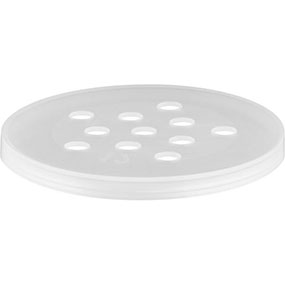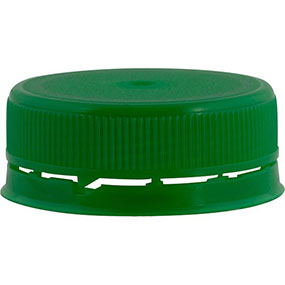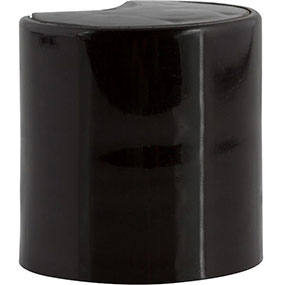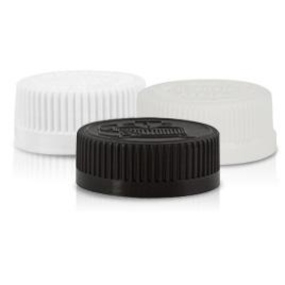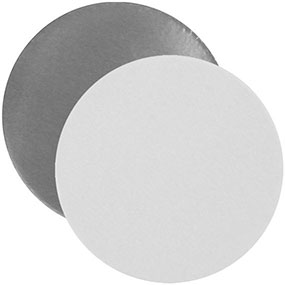
Guide to Neck Finishes | Types, Benefits, & More!


Understanding Threaded Bottle Neck Finishes & Cap Size
Threaded containers and closures (also called continuous thread, screw-top or screw-on) utilize a system where the internal grove on a closure mates with the threads on the corresponding container. This type of container can be identified by its round opening along with the ridge that circles the neck of the container (called the “thread”).
But how do you know which container and closure will fit together? Cap and container manufacturers use a standardized naming convention to describe the opening and threading of their products. We’re here to help you understand what a neck finish is and how to measure it!
What is a Neck Finish?
The opening of a continuous thread container is called the neck finish (the portion of the bottle diagramed by the “H” dimension below). The neck finish includes several measurements:
T Dimension is the measurement of the outside diameter including the thread. Also called the neck width, this is how the bottle neck opening diameter is measured and determines the compatibility between bottle and closure.
E Dimension is the outside diameter of the neck (without the thread). This area is also called the mouth of the bottle or container.
I Dimension is the inner diameter of the bottle neck. Proper fit of disc top caps with a plug seal, as well as orifice reducers can impact how the cap engages with the bottle and depend on this dimension for a secure seal.
S Dimension is the measurement from the top of the finish to the top edge of the first thread.
H Dimension is the height of the neck finish. This is measured from the top of the neck to the point where the T dimension, extended down, intersects with the bottle’s shoulder. This area is also known as the neck or neck finish. The ridge that circles the neck finish is called the thread.
There are two critical factors to determine container/closure fit:
- Neck width (the T Dimension, measured in millimeters)
- Thread style


What is Thread Style?
The thread or threading style (also called thread turn or thread finish) refers to how many times the threads on a container's neck finish pass each other or turn in a non-interrupted spiral design. The cap features a corresponding internal spiral that mates with the neck finish to ensure the packaging is sealed. The Glass Packaging Institute (GPI) and the Society of Plastics Industry (SPI) created a set of guidelines to establish standard for threading on glass and plastic containers respectively. In addition to the neck width, the thread style for both the container and cap must also match to establish a proper seal.
Common Bottle Thread Styles
Though there are a wide range of thread finishes, here are some of the most common thread finishes for both plastic and glass containers:


Most thread styles are represented by a three digit number like the ones listed above. However, specialty caps may represent their neck finish using additional numbers or letters. A few examples of this include many glass containers like ones with a lug neck finish represented with 2040 or caps designed for unique applications like this Drop-Lok cap for carbonated beverages or many of our tamper evident closures.
Types of Neck Finishes


Continuous Thread Neck Finish
Continuous thread caps can easily be sealed and resealed once products are opened. These caps range from 15mm to 120mm in size and are compatable with a variety of liners. Use screw on caps within food and beverage industry, personal care, or pharmaceutical & wellness.
Common screw on caps include:


Cork Neck Finish
Corks can be used in wine and beer bottles. Corks provide an air-tight seal for products that ensures they are kept fresh. Bar top closures for speciality items are commonly used for spirits, olive oils, vinegar, wine, and more. Protect the taste of your items with cork closures!


Snap-On Neck Finish
Snap on caps are tamper evident and commonly used within the food and beverage industry. Use these caps for juices, milk, and other liquids. These caps are BPA free and come in a variety of colors.


Crown Neck Finish
Commonly used for beer bottles and throughout the beverage industry, these caps have a crown neck finish that is crimped. These caps reduce oxidation and ensure all items taste the way it should. These caps are available in a variety of colors.
Using the Neck Finish to Match Containers & Caps
To match a container with the proper closure, the bottle’s neck finish must correspond with the cap’s measurement.
How to Measure a Cap's Neck Finish
To determine a cap’s diameter (or size), measure from one side of the cap’s inner wall to the opposite side. The resulting measurement of the cap’s inner diameter, in millimeters, is the cap’s neck finish.
How to Measure a Container's Neck Finish
To determine a threaded bottle’s neck finish, measure the diameter of opening including the outermost threads (the T Dimension).


Most bottle and closure manufacturers include the neck width and thread style as part of their product specifications. The neck finish is usually represented by:
- A two-digit number (the neck width)
- A three-digit number (the thread finish)
These numbers are separated by a dash or forward slash, such as 28-410 or 28/410. For example, if a bottle features a 28mm 28-410 neck finish:
- 28 represents the T Dimension or neck width, the measurement across the neck opening including the threading in millimeters.
- 410 indicates the 1.5 thread turns around the container's neck, the threading style or thread finish.
To find matching cap or top for this container, a cap should have the same width and thread style and thus have a 28mm 28-410 neck finish. Any of these caps would fit the 28-410 bottle.


However, it is important to consider the packaging as a whole when selecting the best container and closure for your needs. If the container’s thread doesn’t engage properly with its cap, the packaging can fail. This can result in not only wasted product, but a potential mess as well as unhappy customers. Sometimes the packaging can fail or the cap will not engage even though the listed neck finish matches on both the cap and the container.
3 Additional Factors that Can Affect Bottle & Cap Fit
Bottles and caps need to have a secure closure so contents do not spill during transit. Consider these factors when deciding a closure for a certain contents.
1. Additional Components to the Packaging
Sometimes your sauce, spice or product needs additional components for the packaging to fit your needs. When introducing factors such as a cap liner, these items can affect either how the closure sits on the mouth of the container or even include a flange that prevents the thread from properly engaging. Examples of packaging components that may impact cap and bottle compatibility include:
Not only the cap and bottle must work together, but every piece of the packaging. Shrink bands are an ideal and cost effective tamper evident protection to products.


2. Variance in Manufacturer Design
While the system was introduced to create a standardization across the industry, different manufacturer designs and material compostitions can affect the thickness of both cap and closure. For instance, a bottle made of PET plastic may have a thinner wall construction than HDPE due to the individual properties of each plastic type.
Likewise, some child resistant caps have a shorter thread due to their child resistant features and have a more narrow fit tolerance than standard closures.
3. The Conditions of How the Cap is Applied
Outside of the packaging itself, another factor to consider when determining bottle and cap compatibility is the process in which you are applying the caps. While two products may work together out of the box, they must work in the context of your application.
It is essential to review how your product and capping process will affect your packaging. The best way to ensure the correct fit between a bottle and closure is to request a sample of each and test the fit yourself. Some factors include:
- Fill temperature
- Pressure
- Capping process


The Importance of Understanding Neck Finishes
Matching thread style for glass and plastic containers is important for a secure seal. If you have questions about your unique application or need help finding a solution for your specific needs, The Cary Company can help! We have a team of industry experts with the resources and knowledge to find the perfect package for your product! If you have any questions, contact us at 630.629.6600 or check out our online selection!

